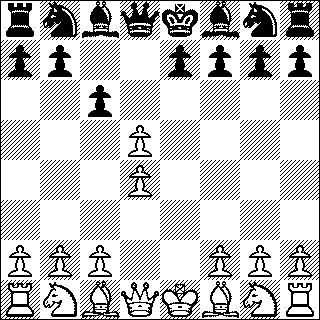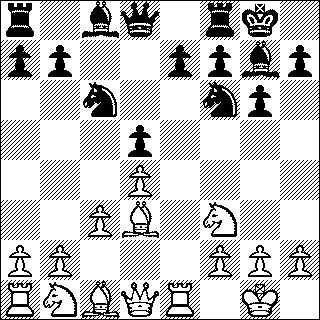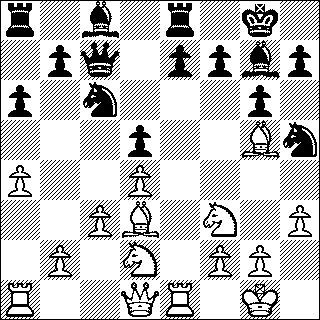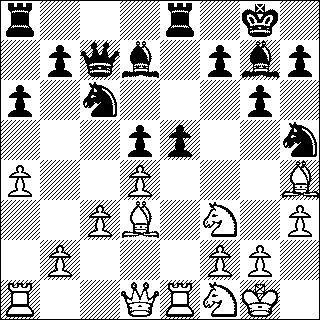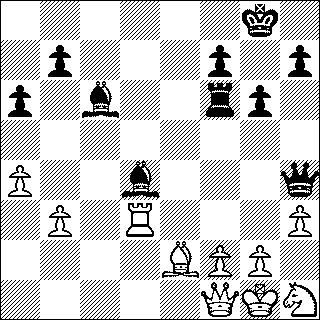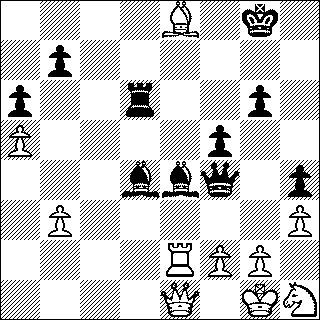In that membership growth is dependent upon member activity at the grass roots level;I stated that I wished to know the thoughts of several specific individuals in USCF leadership and why thier voices mattered on this issue.
1) What is the USCF doing to promote growth of existing clubs and the creation of new clubs in areas that lack them?
2) What is the USCF doing to promote USCF membership among internet players?
3) What is the USCF doing to promote USCF membership among non OTB groups such as correspondence chess, 960, etc?
Specifically, I would like to hear from Bill Hall, Bill Goichberg, Randy Bauer, and Susan Polgar about these things, with specifics. Bill Hall is the ED and is involved in the day to day operations, Bill Goichberg is the President and has proposed radical changes to the dues structure and magazine, Randy Bauer has been very outspoken about these proposed changes, and Susan Polgar has been very vocal about alleged incompetence and about rejected promotional offers in addition to opposition to the proposed changes.
On Thursday June 26th USCF President Bill Goichberg responded to the questions and statements in the various posts and emails.
Regarding the opinion held by some members -- including this writer -- that his proposed changes to the dues structure and Chess Life would be the "neutering of Chess Life" Goichberg wrote:
I don't accept that adoption of the new plan would reduce the role of Chess Life, as the online version would also be Chess Life. It's possible that despite bulletin and email reminders to those not receiving the paper magazine, a smaller percentage of our overall membership will read the paper or online Chess Life, but this may be balanced by increased membership (or at least stable membership where there would have otherwise been a decline).On the three specific questions Goichberg responded:
1) What is the USCF doing to promote growth of existing clubs and the creation of new clubs in areas that lack them?
Clubs have been especially hard hit by the internet, as both appeal to a large extent to players seeking convenient, inexpensive play. The trend for clubs has been down for some time and we would be doing well if we could simply halt this downward slide, but no one has found an effective way to do this. What USCF has done to help clubs in recent years includes:
A) Short TLAs cost less per line than long TLAs, and clubs tend to hold relatively small events with shorter TLAs. Overall, TLAs approximately cover their costs, but the ones submitted by clubs are subsidized somewhat.
B) A free TLA of up to 8 lines, the "Chess Club Special," is offered each month for events playing only on one or more weekday evenings.
C) This year, USCF partnered with R. V. Nuccio to offer USCF affiliates affordable liability and short term event insurance.
D) During the past 4 or 5 years, due to the great work of Mike Nolan, the speed and accuracy of USCF ratings has improved dramatically, helping clubs as well as other affiliates. We have gone from many tournaments taking a month or more to rate, no easy member access to rating reports, and manual corrections often taking over a year, to today's conditions in which events are rated in a few hours, members can view crosstables online with start and finish ratings for events going back to 1991, corrections are automated and quick, and official ratings are updated twice as often. I am aware of no major chess federation in the world that offers rating service as good as USCF.
E) A USCF Forum to discuss Chess Club issues was set up several years ago.
F) Tournament Memberships were reinstated by the EB in 2005 for the first time since about 1990. These reduce the minimum EF+dues cost for new players and are especially of interest to clubs and low fee tournaments, at which the dues would otherwise often cost more than the entry fee.
2) What is the USCF doing to promote USCF membership among internet players?
A) USCF's most effective promotional tool has long been its regular rating system. We need to promote regular rated online play, and the 2008 delegates agenda includes a proposal by the Executive Board to establish safeguards with the idea of promoting regular rated online play.
B) Beginning in 2006, the USCF website dramatically improved its coverage of chess games and news. The site still has some problems that are being worked on, but is much more likely to attract non-member viewers than our old site, which is the first step toward promoting USCF membership among internet players.
C) World Chess Live is providing outstanding sponsorship for our Grand Prix and new Junior Grand Prix, holding quick chess Grand Prix events that require USCF membership, as well as offering a free 6 month membership to USCF members.
D) I know you don't like the proposed $29 adult membership without hard copy Chess Life, but at this price we expect to sign up members who want to read the online Chess Life but would not pay $41. Since 1995, USCF dues have become quite cost sensitive.
3) What is the USCF doing to promote USCF membership among non OTB groups such as correspondence chess, 960, etc?
A) The current EB has agreed with and followed up on suggestions by you and others that USCF should provide international representation for our correspondence players.
B) I would also like to see Alex Dunne's column return to Chess Life, but the board has considered mandating of specific columns to be unwise micromanagement.
C) I doubt that there are a significant number of Chess 960 players in the US. However, we might consider experimenting with tournaments using this variant, which could lead to starting a rating system for it.
Of the things cited by Goichberg, the insurance he noted in 1C is considered most noteworthy. One delegate wrote me, "The insurance is probably the single biggest accomplishment. (...) I know two other organizers who also took advantage of this policy in MA. Personally, I think that USCF should have the email addresses of all affiliates and blast emails to them when something like this becomes available and/or snail mail would even be a nice touch." The delegate added: "Other than that, I find that USCF is as disconnected from its membership and affiliates as is humanly possible. (...) We'll just continue to grow the state affiliate and regional affiliates to take up the slack.
The reality is that the future for USCF is one of two things - either more scholastics members and focus or acknowledgment of a declining adult pool of players. Decreasing dues is just playing with the symptom and ignoring the causes.
Players want an organization which promotes chess. USCF promotes special interests. I don't see anything on the USCF website with a step by step guideline of how to create a chess club, who to contact for assistance, mentors for help, standardized flyers, affiliate web pages, regional events, how to create pools of club leaders to create larger events and jointly publicize clubs. Nothing about arranging club leagues."
After receiving nothing but silence from the other "leaders" named above, I posted the relevant portions of the discussion to Susan Polgar's ChessDiscussion.com forum on Thursday July 3rd. Susan Polgar responded both on that forum and on her US Chess Discussion blog.
The answers for all three questions are either nothing or next to nothing. These are some of the things Paul and I pushed the board to do since last August. These are the areas which we have supported for a long time (via sponsorship, promotion, and publicity). Without chess promotion and drastic improvement in the way how we conduct business, the USCF will continue to struggle very badly to survive year after year. Changing the dues structure will make little if any impact at all. This is also not the priority now. We also outlined the way how it can be done.First, "nothing or next to nothing" differs quite a bit from Goichberg's fairly detailed answers above, answers Polgar had received via email on June 26th and that had been posted on the USCF Forum on the 28th. With these in hand, why was there no counter points offered if the true answer is "nothing or next to nothing?" Second, the where are the board motions from Polgar and Truong detailing "things Paul and I pushed the board to do since last August?" To have something accomplished it must be submitted for approval and implementation. The way the board works is that those on the board wishing to implement an initiative submit a board motion. I can find no motions in the BINFOs which are the repository of motions and discussion among the board members.
Polgar then lodges complaints about various persons in leadership and contracted staff. This writer finds difficult the task of separating legitimate complaints from politically motivated attacks in much of Polgar's statements since she and Truong took their seats on the board. The assertions comprising this latest statement falls into that category.
The questions were posed to ascertain just what leadership recognized that the USCF is currently doing to promote membership growth among adult chess players in the USA. Bill Goichberg responded with analysis of the USCF's efforts and defended his plan regarding membership growth and financial realities. Susan Polgar answered with very little substance that this writer could find and with what I can only consider a political screed against those she countenances as opponents. No one else in leadership responded at all.
USCF delegates and attendees to the workshops at the US Open in Dallas this year need to keep in mind the above when considering the Goichberg plan and other leadership questions that will arise. While I disagree with the plan as proposed, it must be stated that only Bill Goichberg has addressed the financial crisis and membership questions with a concrete strategy. The only things heard from the rest of leadership are political bluster or silence.
Cross Posted at ChessUSA


 In the first event I participated in at ICCF,
In the first event I participated in at ICCF,  In event
In event  In event
In event  In event
In event 




